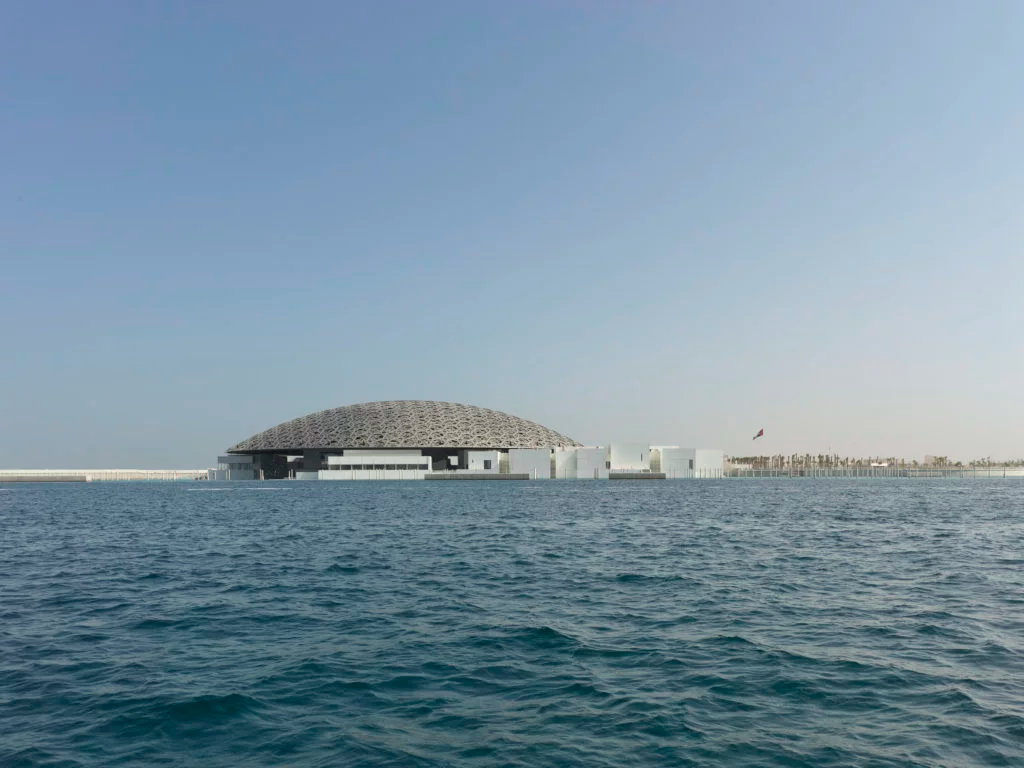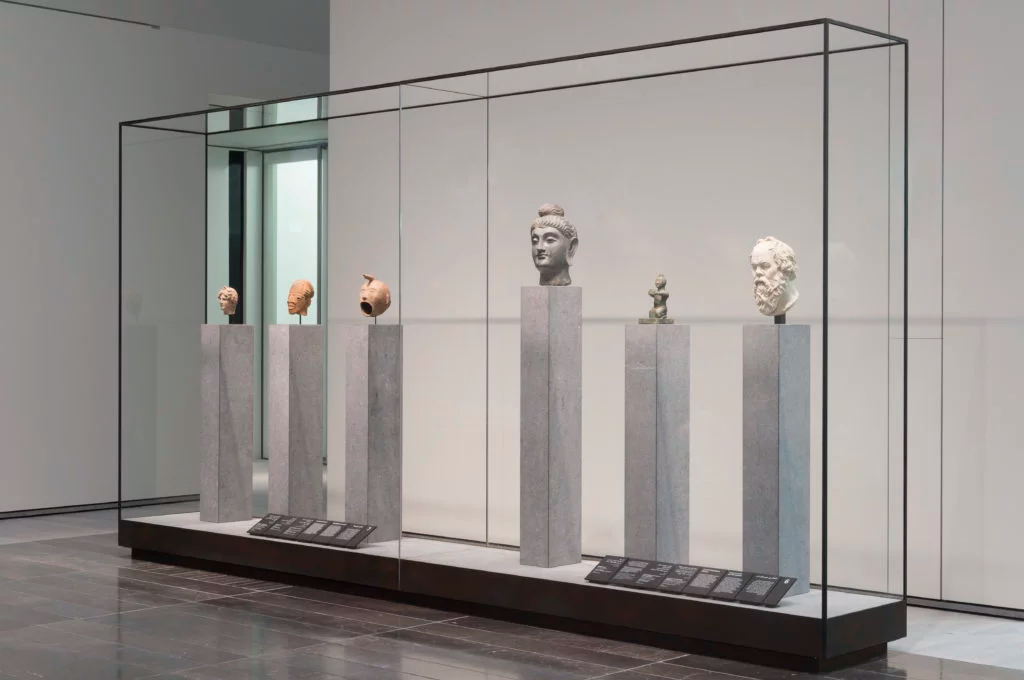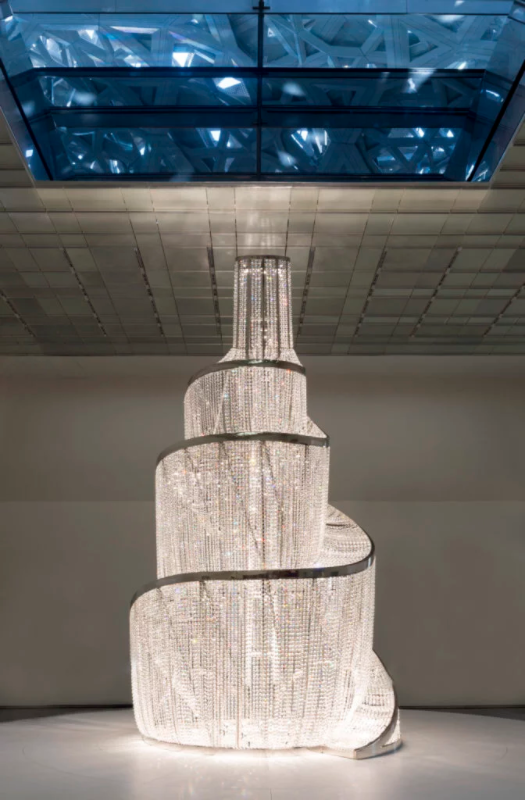The museum explores art throughout history, but with significant historical omissions.
 Louvre Abu Dhabi. Photo: Roland Halbe, Louvre Abu Dhabi ©, news.artnet.com
Louvre Abu Dhabi. Photo: Roland Halbe, Louvre Abu Dhabi ©, news.artnet.com
Jean-Luc Martinez, the president of the Louvre Museum in Paris, said at a press conference that it was the most ambitious project of the early 21st century. He hoped the museum would be “an antidote to the poison of hatred and barbarism”, referring to attacks on cultural heritage in Mali, Syria and Iraq.
 Socrates meets Buddha. Photo: Marc Domage, Louvre Abu Dhabi ©, news.artnet.com
Socrates meets Buddha. Photo: Marc Domage, Louvre Abu Dhabi ©, news.artnet.com
The inaugural exhibition at the Louvre Abu Dhabi features the most important artworks in history, among them Bellini’s Madonna and Child, da Vinci’s La Belle Ferronnière, as well as works by Piet Mondrian once owned by Yves Saint Laurent. Artworks are not just displayed chronologically, they bring controversial works of the same period together to show the diversity of cultural movements. One exhibition room features ancient gold masks from China, Peru and the Middle East, while another juxtaposes sculpture from Gabon with Marcel Duchamp’s Bottle Rack.

Flower of Light, Ai Weiwei. Photo: Marc Domage, Louvre Abu Dhabi ©, news.artnet.com
However, slave plantations in a 17-th century painting are displayed under the title The Residence of a Sugarcane Planter in Brazil. The themes of slavery and exploitations are not covered at all, though the slave trade in African and European countries was the largest forced migration in history. Among the possible reasons is that Abu Dhabi used to be a big slave trade centre long before oil and gas were discovered there.
Subscribe to our mailing list: